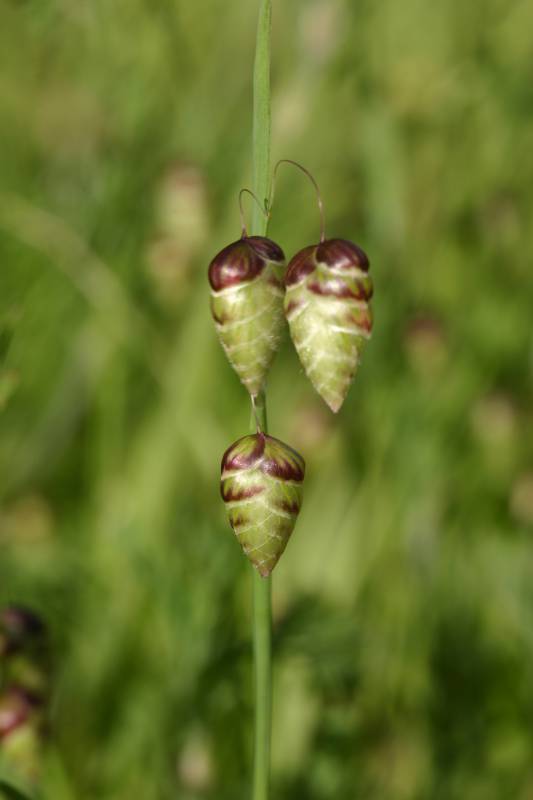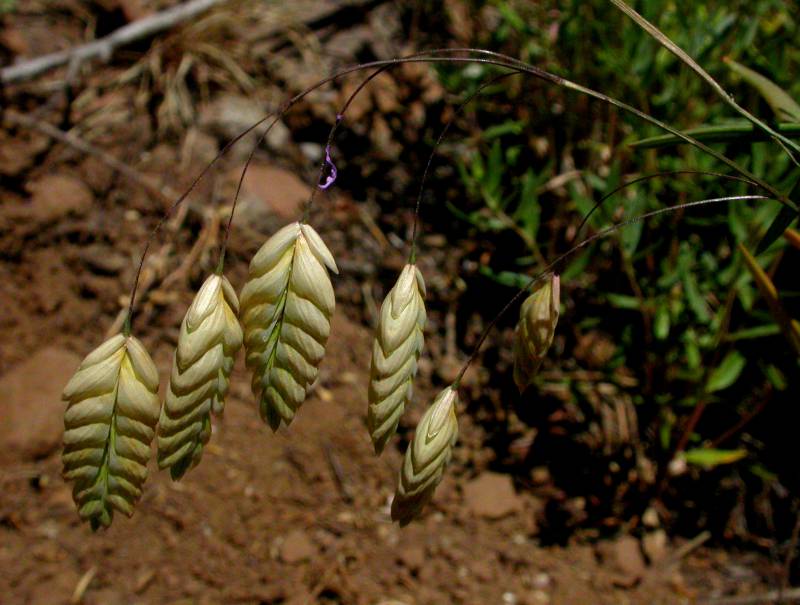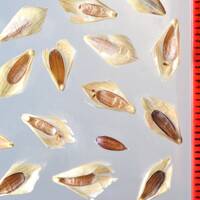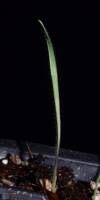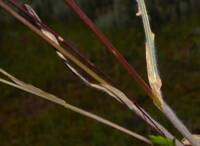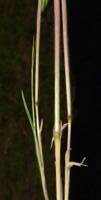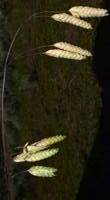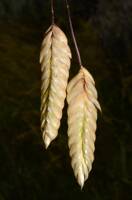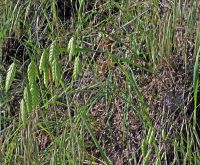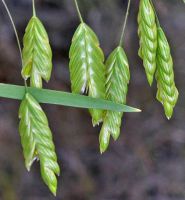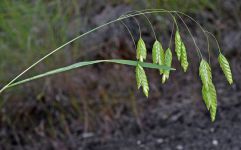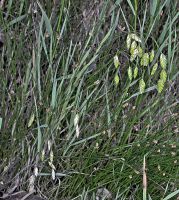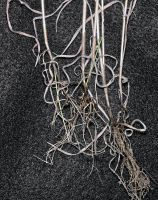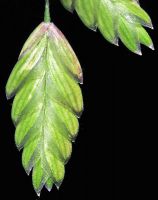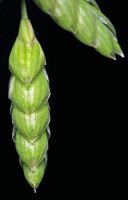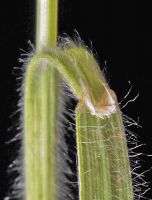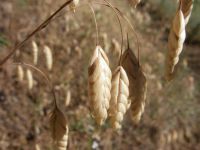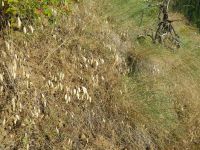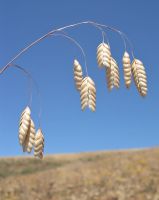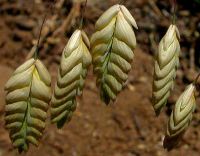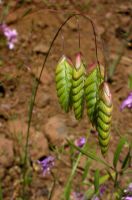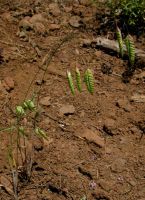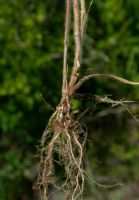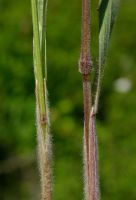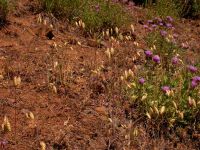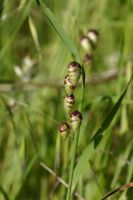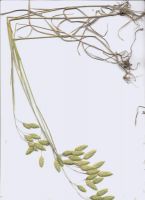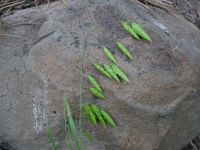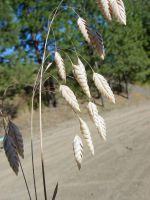Distribution: Southern British Columbia south to California, east to Idaho and Montana; occasional in eastern United States.
Habitat: Waste ground, roadsides, and overgrazed areas.
Flowers: Late May - July
Origin: Introduced
Growth Duration: Annual
Conservation Status: Not of concern
Pollination: Wind
Annual, the culms mostly glabrous, 2-6 dm. tall, hollow
Sheaths closed, covered with long, soft hairs; auricles lacking; ligules 0.5-1.5 mm. long, pubescent; blades 2-5 mm. broad, pubescent.
Inflorescence a one-sided panicle 4-12 cm. long, the branches slender and lax, usually with a single spikelet; spikelets strongly compressed, oblong-ovate, 15-30 mm. long and 8-12 mm. broad, glabrous, 9- to 15-flowered; glumes oblong-lanceolate, the first 4-6 mm. long, the second 7-9 mm. long; lemmas strongly inflated, 9-11 mm. long, usually awnless; paleas 1-3 mm. shorter than the lemmas; anthers 3, rarely exerted.
Utricle
Publication: Index Sem. (St. Petersburg) 3: 30. 1837.
PNW Herbaria: Specimen records of Bromus briziformis in the Consortium of Pacific Northwest Herbaria database
WA Flora Checklist: Bromus briziformis checklist entry
OregonFlora: Bromus briziformis information
E-Flora BC: Bromus briziformis atlas page
CalPhotos: Bromus briziformis photos

